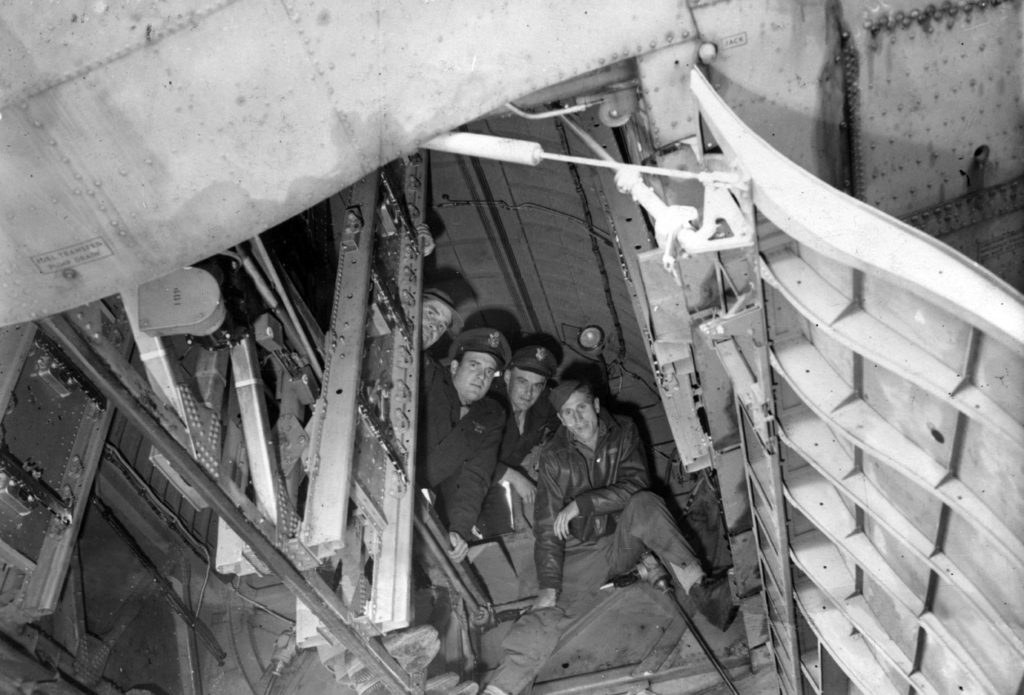
Since completing the bombbay for Liberty Belle (44-85734) back in November, we have been free to permanently reassemble the bombbay for Lucky Thirteen, which had been used as a pattern. This means that the next step will be the lower half of Stations 4 and 5 – the area which entails the bombbay door mechanisms.
You can see this area in this photo of Rigor Mortis (41-24591, 305BG), whose crew posed after working to remove a bomb that failed to jettison on 11 June 1943. Rigor Mortis was one of many bombers that were lost after running out of fuel on the disastrous Stuttgart strike of 6 September 1943 – the same one on which Lucky Thirteen was lost.

The bombbay to 44-83316 when it first arrived back in 2013. The right side of the bay is Station 4 (the back wall of the cockpit) and the left is Station 5 (the front wall of the radio compartment.) This bombbay was restored for Lucky Thirteen and also served as a pattern in building the new one for Liberty Belle. As you can see from this photo, much of Station 5 was missing and the lower half of Station 4 was heavily damaged.
Photo taken 1 January 2013.
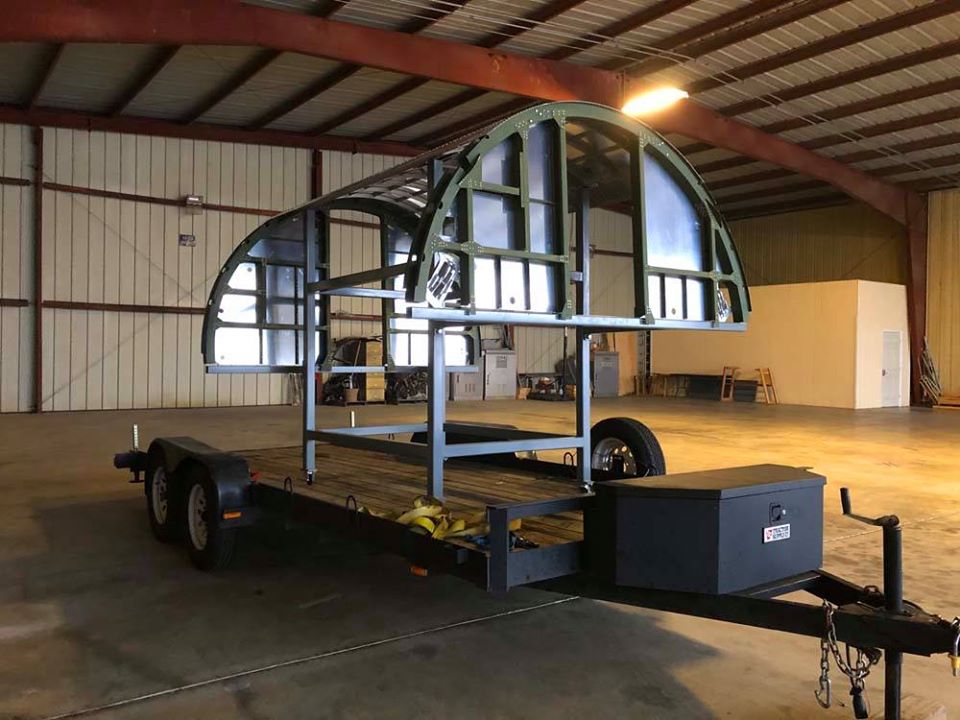
Liberty Belle‘s bombbay completed and awaiting transfer. Lucky Thirteen‘s bombbay – taken from 44-83316 – was used as a pattern in making this piece, and both were cleaned and finished alongside one another.
Photo taken 26 October 2019.
Thanks to the generous assistance of the Champaign Aviation Museum, we have been loaned the lower-Station 4 skins from 44-83722. “722” saw service out at Yucca Flats, Nevada for use in nuclear weapons testing, where it was badly wrecked. This skin will allow us to have a pattern from which we can restore the damaged and missing pieces from the lower half of “316.”
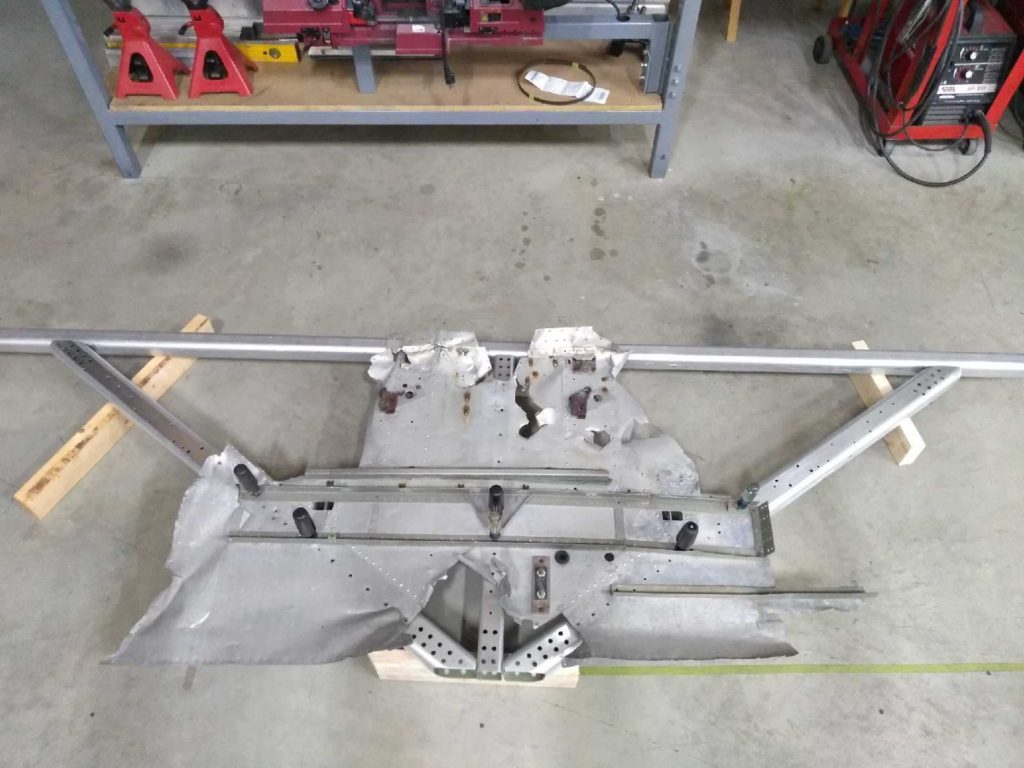

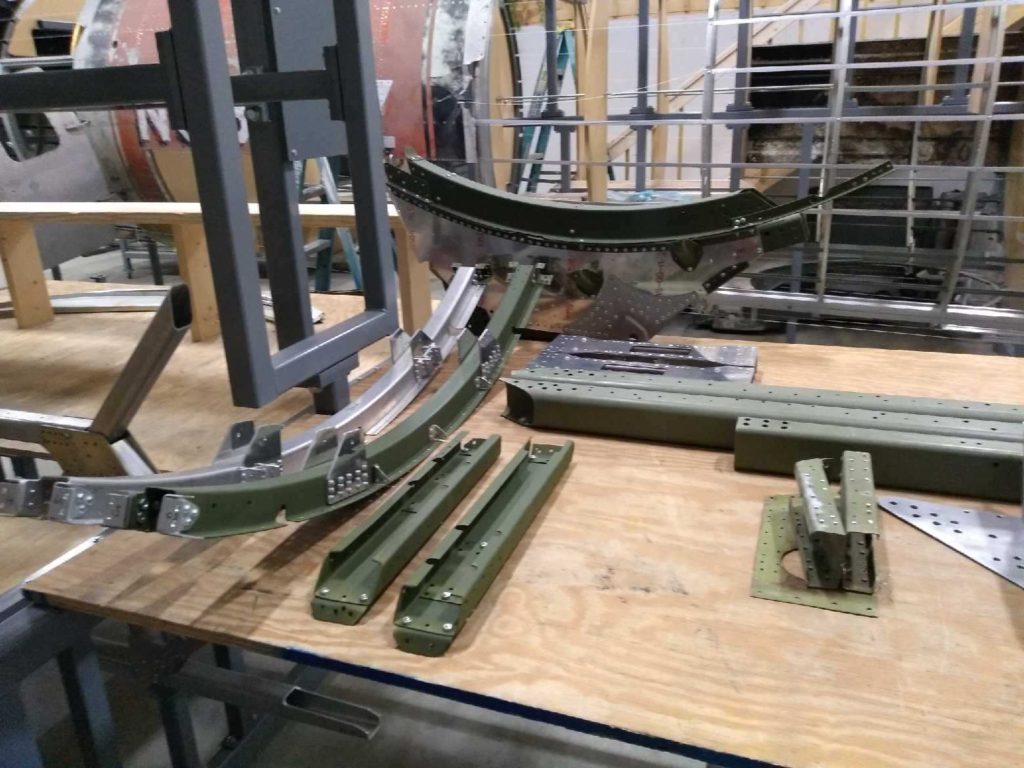
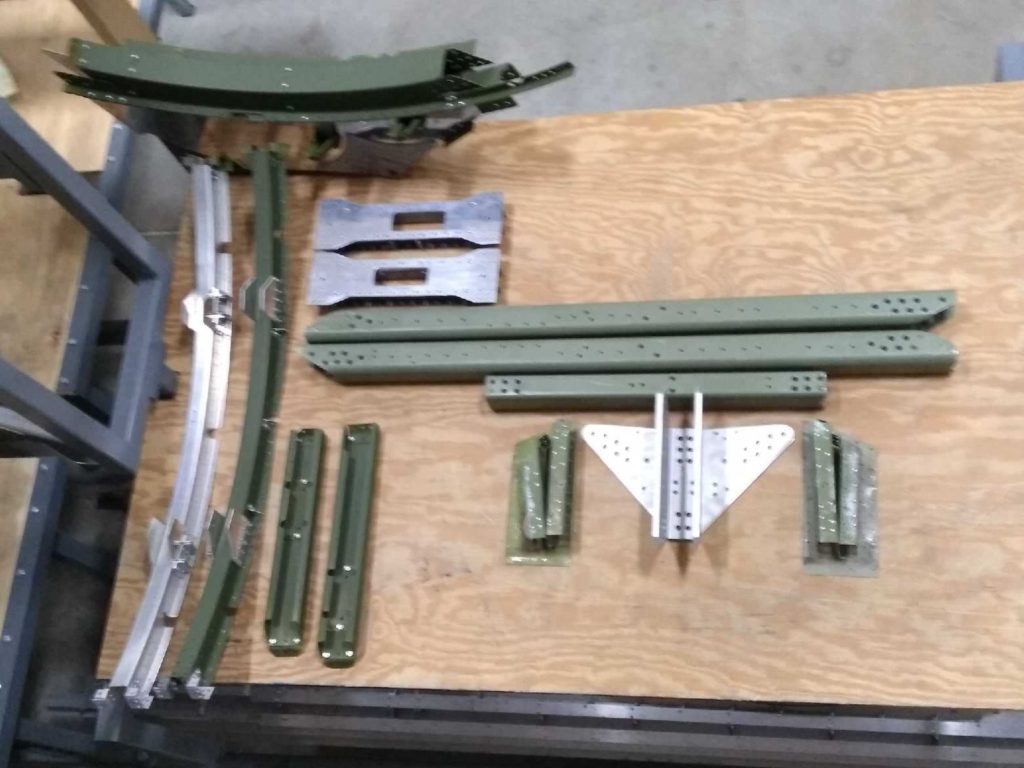

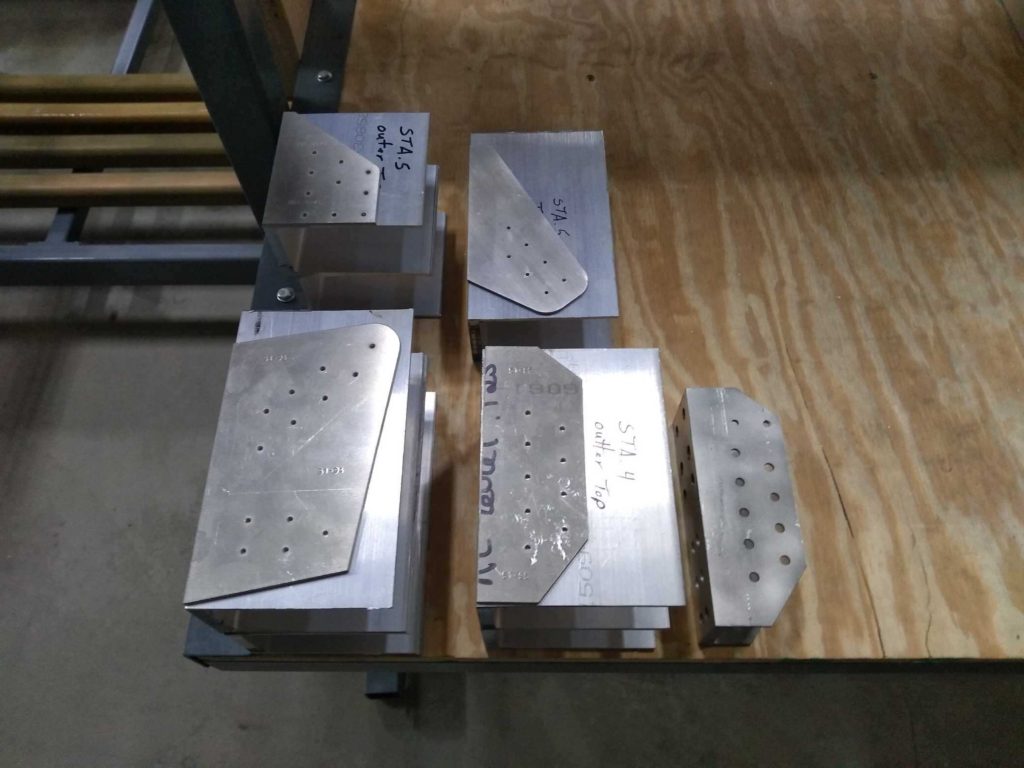
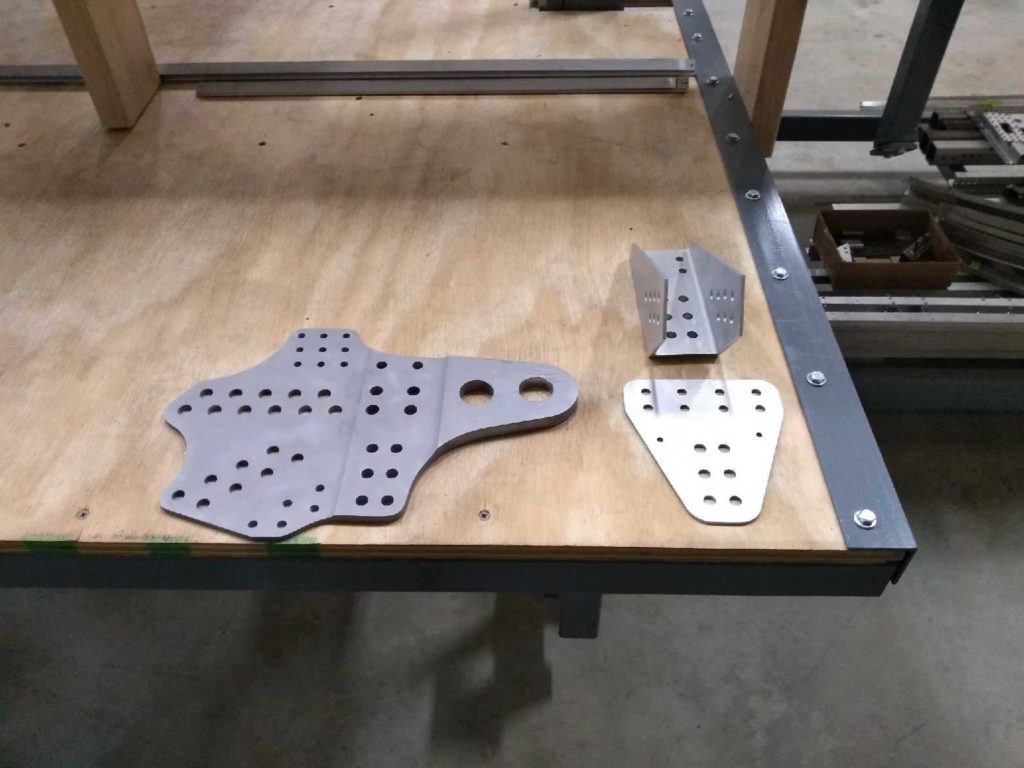
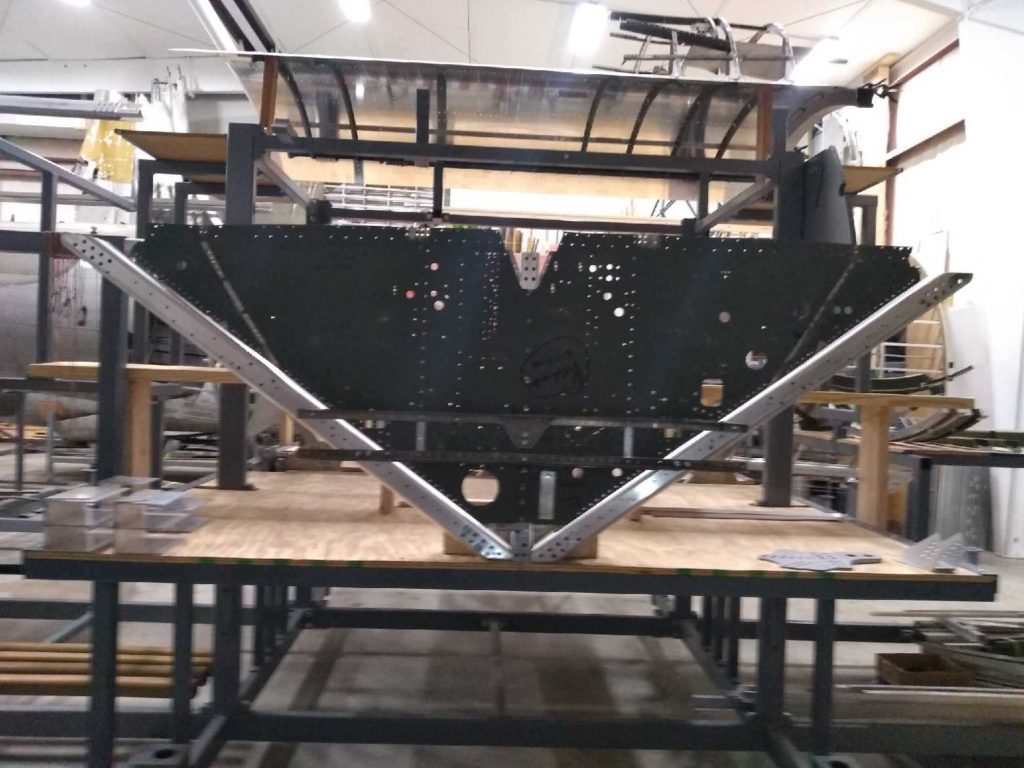

Photos taken 22 January 2020.
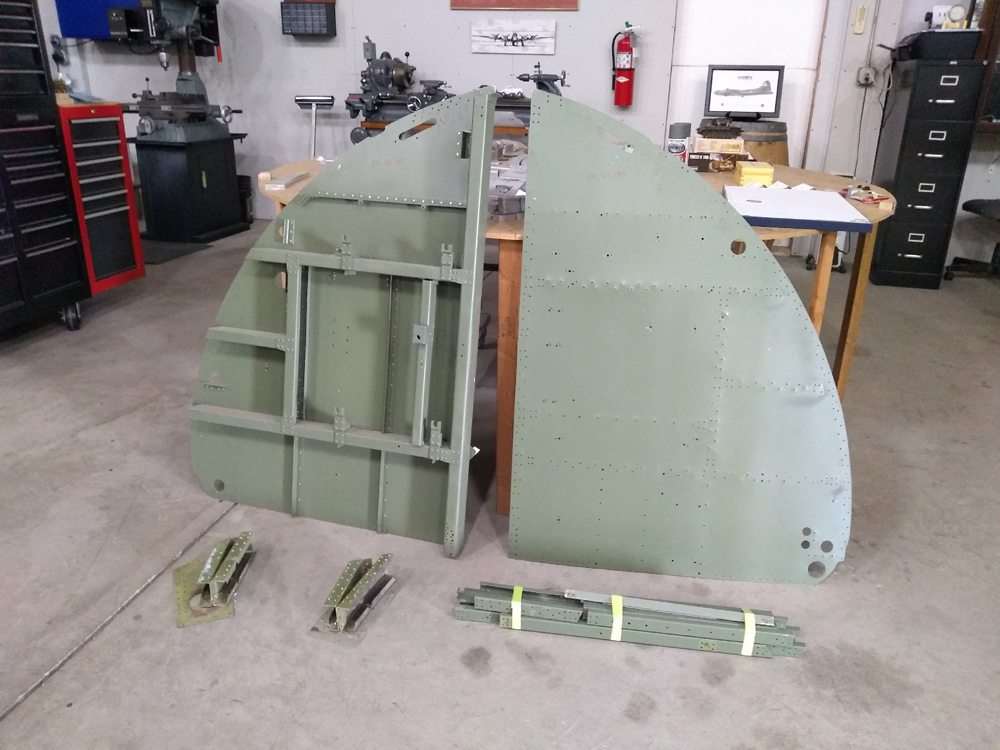
Likewise, we now have Station 5 out of 44-83387. “387,” much like “316,” was used in Hollywood film productions, being used as a film set by MGM Studios in Beverley Hills, California. While we had already rebuilt Station 5 using what bits remained in “316,” having these bits from “387” will allow us to ensure that our Station 5 is all original.
Photo taken 22 January 2020.
Lastly, a huge donation came from our friend Christopher Wilkinson, who provided the hoists for Lucky Thirteen‘s bombbay.
These hoists were found New Old Stock in Texas and were sent to us (at some expense) still sealed in the original banding. The box was a little worn, but the contents inside were still in their original paper. Everything was still wrapped in cosmoline – nasty stuff – to keep it from corroding. So, over the New Years holiday, we worked to clean it all up.
Everything looks brand new. Not bad for a 76 year-old bit of equipment.
Now there is one caveat. The manual calls for a Type C-3 and this is a Type C-3A. However, the part numbers on each piece matches those in the blueprints. So far, the only difference we can find are the weight ratings. The C-3 was rated for weights up to 2,000 lbs and the C-3A for up to 4,000 lbs. Seeing as the B-17 was not rated to carry the M56 4,000 lb bomb, this might be the difference.
Regardless, all that is left to complete the bomb hoist assembly are the canvas slings (300 lb, 500 lb, 1,000 lb, and 2,000 lb) and, most importantly, the Bomb Hoist Support Frame (Blueprint 15-7582-B).

The Bomb Hoists are fully-cleaned and ready for their trip up to hangar.
Photo taken 4 January 2019.
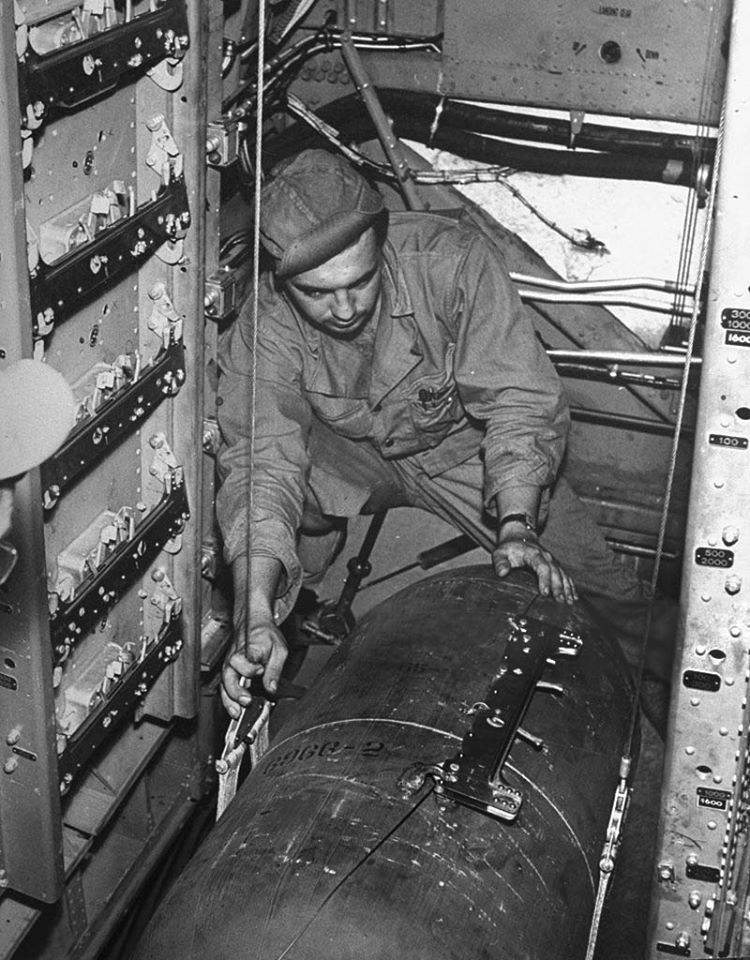
An armorer loads an M65 1,000 lb bomb aboard a B-17. The B-17 was rated to carry up to four of these. Note the canvas sling which is clipped to the Bomb Hoist cables.
A Type B-7 Shackle is clipped to the bomb, with a wire running through to each of the two fuse propellers. Once raised into the airplane, the shackle is clipped to a pair of hooks, with a Type A-2 Release Box attaching in the center. The release box, connected to the bombsight, releases the shackle from the bomb over the target. The wire slips out of the fuses as the bomb falls out, arming the bomb.
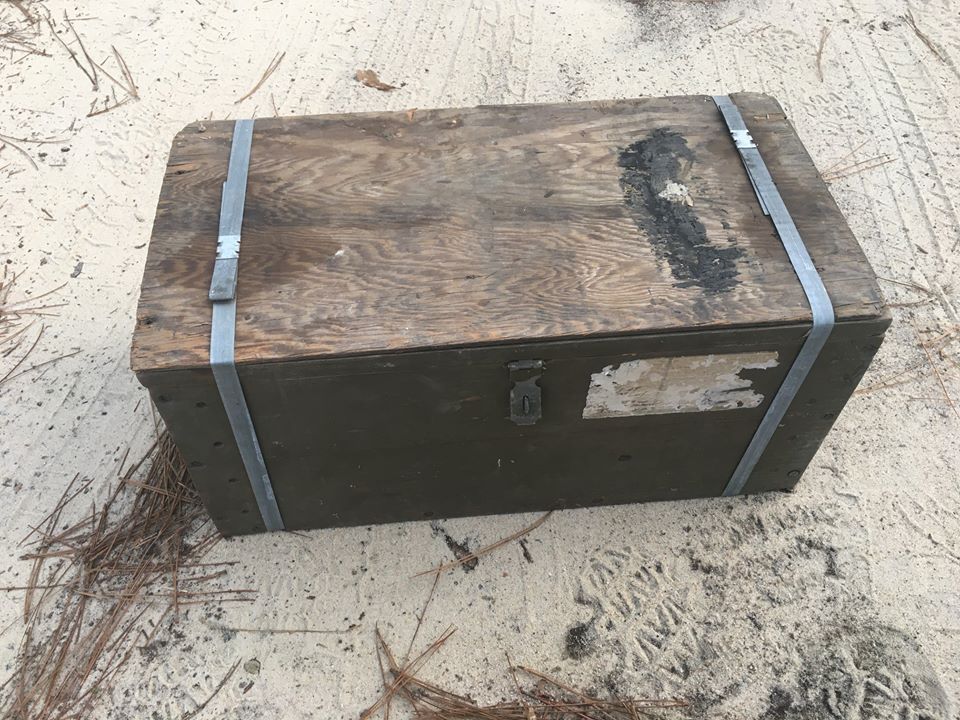
Chris’s Type C-3A Bomb Hoist box arrives in the mail. Note the banding and cover board still intact since the war.
Photo taken 20 December 2019.
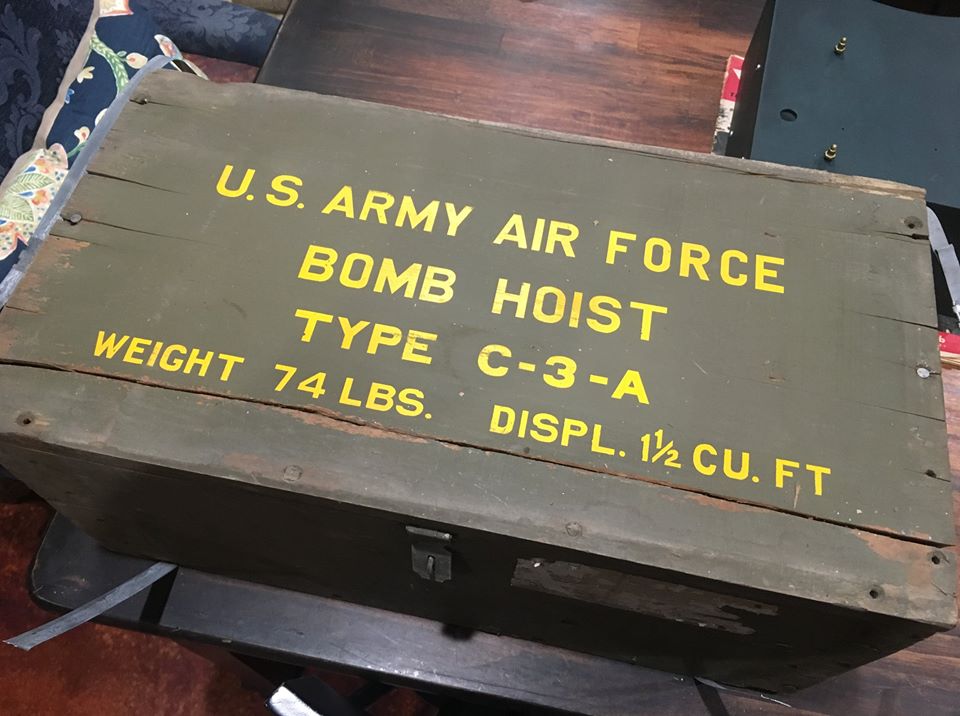
The banding and cover board are removed from the Type C-3A Bomb Hoist box. The lid had split and a hinge was destroyed from being roughly handled somewhere in its lifetime.
Photo taken 20 December 2019.
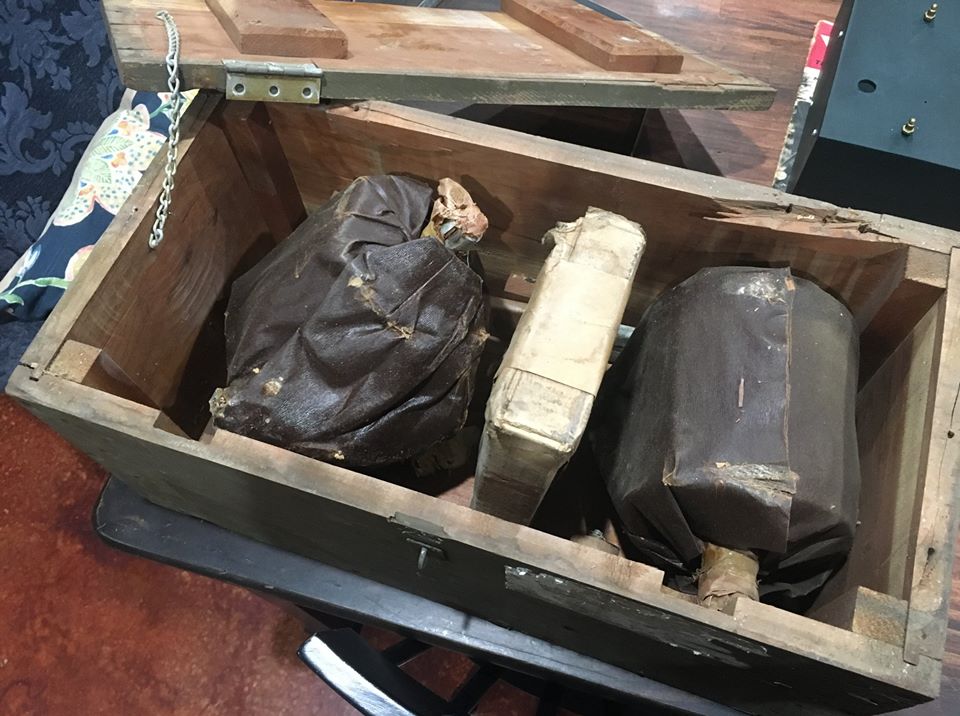
The contents of the Type C-3A Bomb Hoist box – being opened for the first time in at least 75 years! Note how everything is still wrapped, the parts being smothered in cosmoline. The inspection tag notes that this box was last recorded as government inventory on 19 July 1960.
Photo taken 20 December 2019.
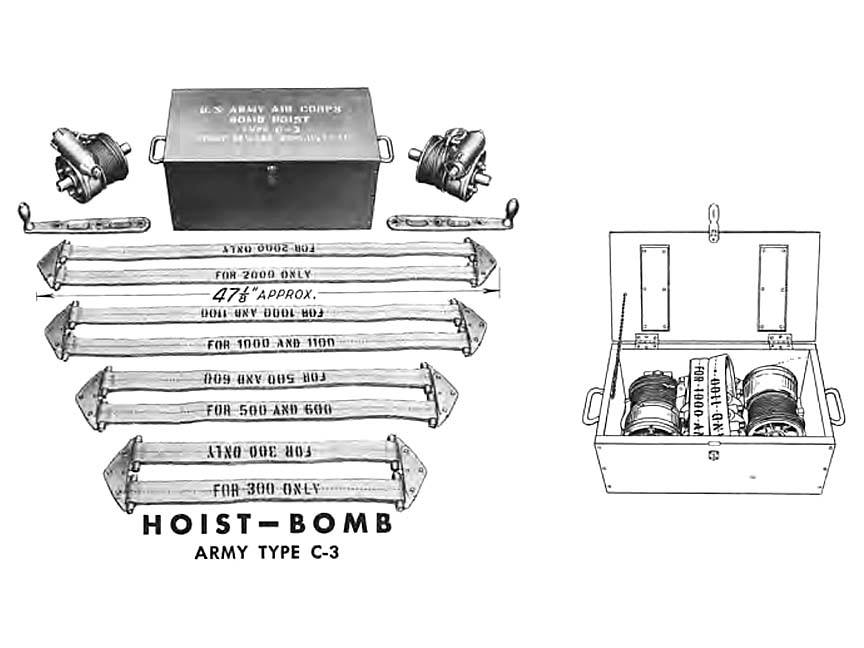
A drawing of the Type C-3 Bomb Hoist box and its original contents.
Since we have a C-3A, we lack the canvas hoists. The C-3A came with a 2,000 lb rated chain, presumably to supplement the 2,000 lb canvas sling from the previous kit.
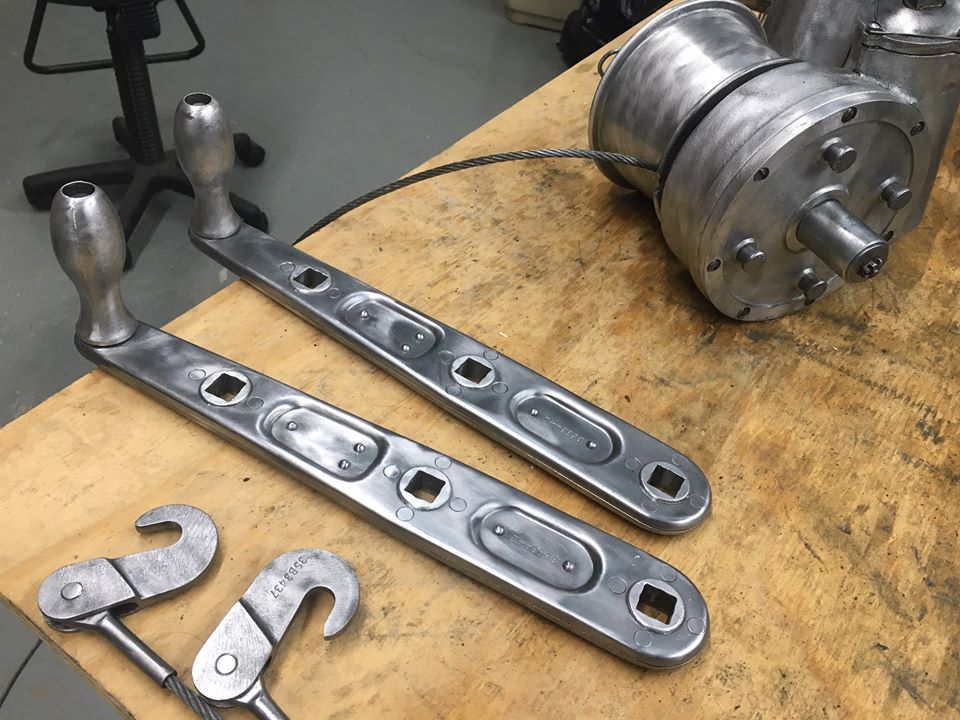
The handles and hook mechanisms are cleaned. The cables were cleaned last – a lot of work!
Photo taken 1 January 2019.
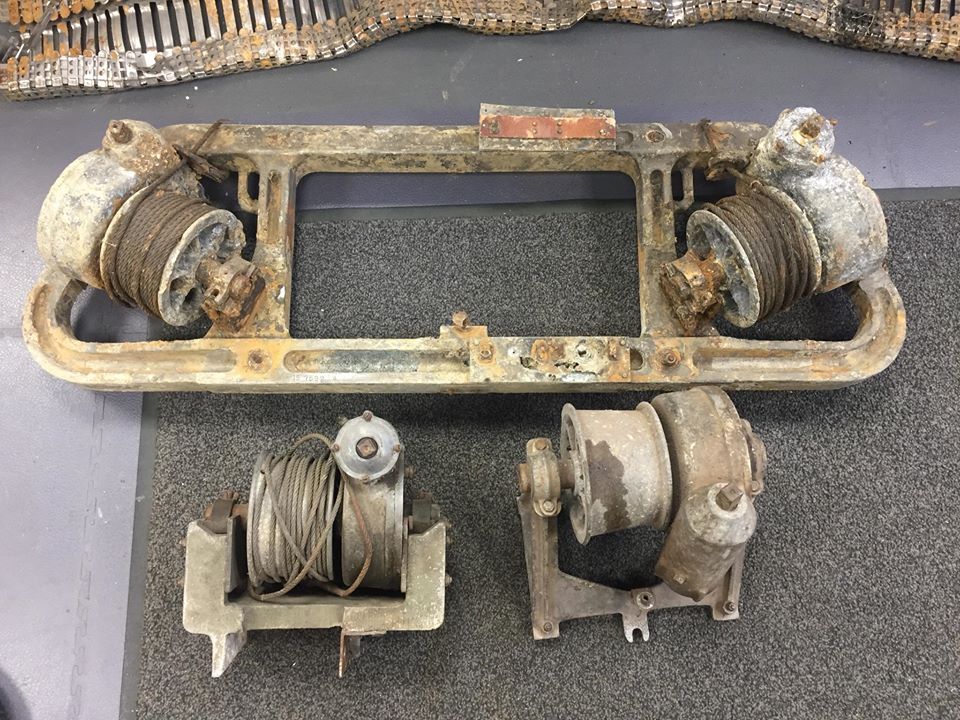
An example of the Bomb Hoist Support Frame (Blueprint 15-7582-B). This particular Frame belongs to our friend Dave with the B-17 Cockpit Project. Hopefully we can locate one of these Bomb Hoist Support Frames, or perhaps locate a volunteer proficient enough in metal casting to recreate one. We have the blueprints…
Below the frame are two other bomb hoists. The one on the right comes from a North American B-25, while the other comes from an extremely rare B-17F external bomb rack.
Photo taken 21 April 2018.

Throughout 42-5050 to 42-30246 – roughly September 1942 to May 1943 – F model B-17s had the option of carrying a pair of bombs on external racks near the inboard engine of each wing. In theory, these racks allowed the B-17 to increase its bombload to anywhere as high as 12,000 lbs. It was hoped that the extra tonnage might have an impact on the anti-submarine pen campaign, where US bombs rarely penetrated the thick concrete.
Because the extra weight and drag affected range, these units were discontinued followed the halting of the U-boat campaign in June.

And just in case you didn’t notice…
The Station 5 from “387” still had its attachment points for storing the Bomb Hoist Support Frame.

Lastly, we have been making excellent progress on our fundraiser for the ALCLAD Aluminum Stamp Applicators.
As noted on our Help Get L13’s ALCLAD Stamps! post, these are needed to recreate the wartime lettering that was visible on all unpainted aluminum. Since the B-17’s interior was almost completely unpainted, these stamps were quite visible during the war. We have recreated this lettering but we need your helping in purchasing the tools to apply it. If you can help with this, please send your contribution to Store@HangarThirteen.org using your preferred online payment service (we use PayPal).
This will go a long way toward ensuring ultimate authenticity, and we are VERY grateful to have already received contirbutions from our good friends Steve Heeb, Richard Boyens, Joe Hall, and Keith Ellefson. Thanks a ton guys!
